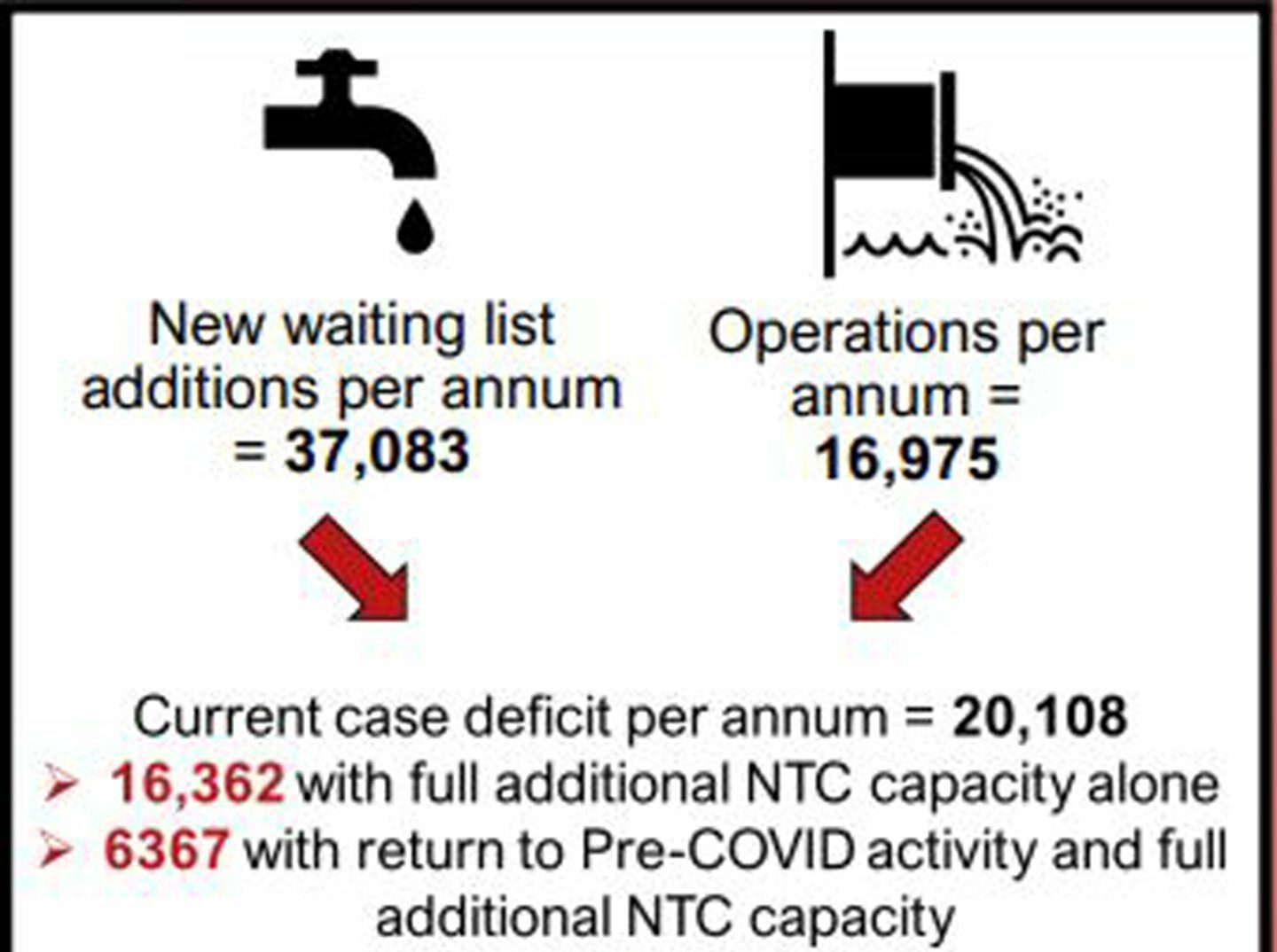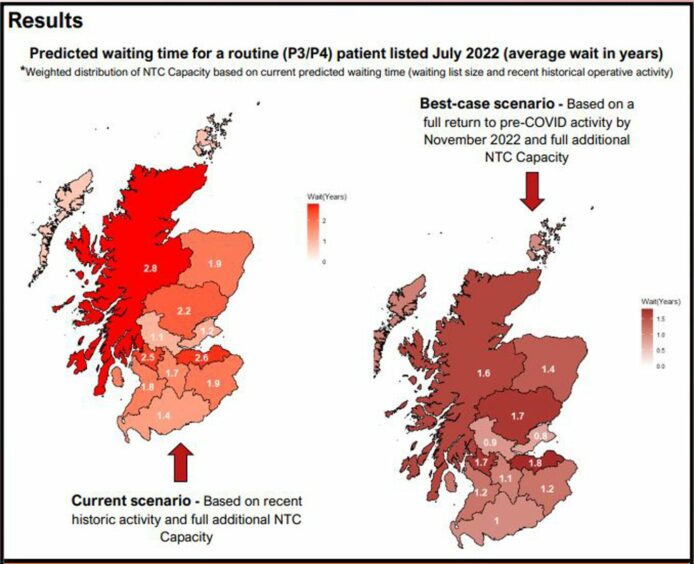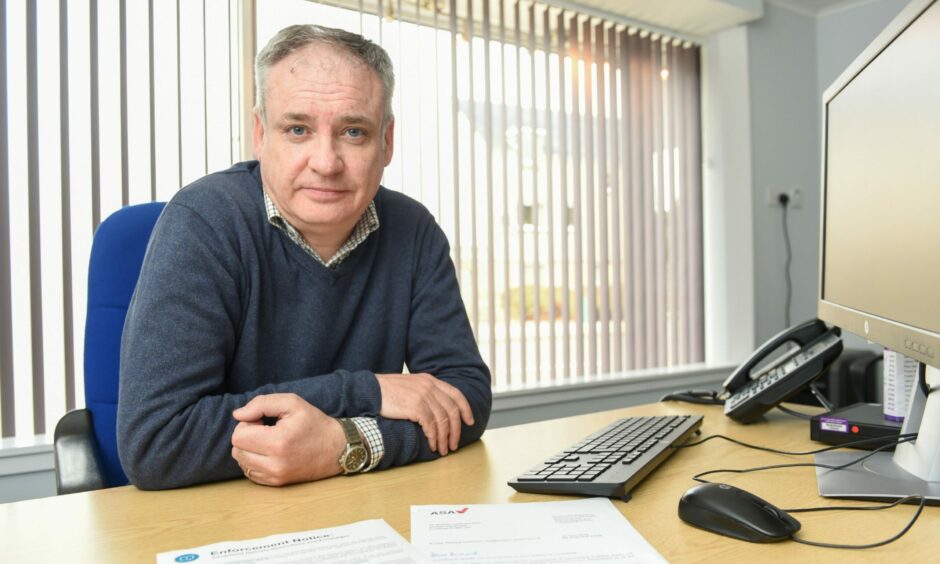Patients in the Highlands could be forced to wait for up to seven years to get an orthopaedic surgery due to a “significant” backlog of cases.
Researchers at Aberdeen University have used data from Public Health Scotland to evaluate current surgical rates across all health boards and predict future waiting times.
The team has calculated four possible scenarios – ranging from “best case scenario” to “worst case scenario” – by examining the discrepancy between supply and demand.
They have concluded that even if hospitals try to increase their current surgical rates to reach pre-pandemic levels, waiting lists are still expected to continue to grow annually.
According to the study published in the Bone and Joint Research journal, orthopaedic patients listed this July could wait for more than two years on average to receive treatment.
This was based on the number of orthopaedic surgeries carried out last year, along with the number of currently waiting patients and the number of people added in one year.
Highland patients face longest waiting times in Scotland
While NHS Grampian matches the national average of around two years, waiting times at NHS Highland have been projected to go up to seven years in the worst case scenario.
In the best case scenario, patients could be waiting for an orthopaedic surgery for one year and four months in Grampian, and one year and six months in the Highlands.
Meanwhile, waiting times in Orkney will be nine months both in the best and worst case scenarios.
Luke Farrow, clinical research fellow at Aberdeen University, said there is an urgent need of a “significant” change from current practice to improve these statistics.
With current admissions only 52% of those in 2019, he also highlighted the extensive challenges in meeting the Scottish Government target of achieving one-year wait time by 2024.
Mr Farrow added: “As the rate that patients are being added to waiting lists exceeds the rate they are being taken off it, any delay results in an associated rise in the waiting times.
“Based on current activity for every month of delay in providing this necessary surgical capacity, there is more than a one-month increase in a new patient’s waiting time.
“Our key findings suggest that there is a significant current annual case deficit that will not be resolved even in ‘best-case scenario’ conditions.
“If the barriers to significant expansion of current activity are not addressed urgently, then waiting lists will continue to deteriorate and patients will continue to come to harm as a result.”
More should be done to tackle waiting times in Grampian
While the projected waiting times in Grampian are not the worst in Scotland, with five other areas facing longer lists of orthopedic patients, Moray MSP Richard Lochhead said more should be done to tackle the issue.
In October, Mr Lochhead asked the health board for an “up-to-date report” on orthopedic surgery waiting times following repeated complaints from constituents.
The backlog of elective surgeries at Dr Gray’s was also recently impacted by the unexpected closure of half of the hospital’s theatres for emergency repairs.
Mr Lochhead hopes the reopening of the theatres will now help tackle the issue, but urged NHS Grampian to look for a long-term solution.
He said: “This research outlines the significant challenges the NHS is facing after the pandemic, but also the patients who are still waiting to be treated.
“It is worrying that patients dealing with difficult and very painful orthopedic conditions are facing long-term waits to get an appointment. This affects not only their wellbeing, but their quality of life.
“I hope the recent reopening of theatres at Dr Gray’s will help tackle those waiting times and improve the outcome for patients.
“NHS Grampian should explore all possible avenues to reduce their waiting list and ensure patients are treated as soon as possible.”



